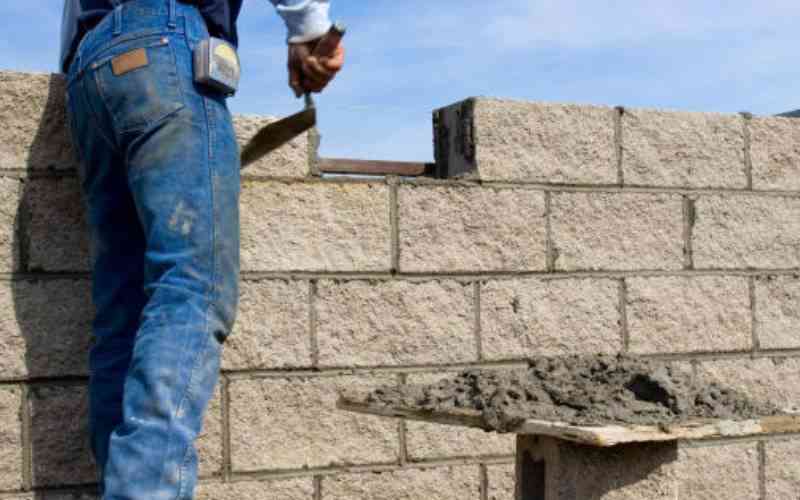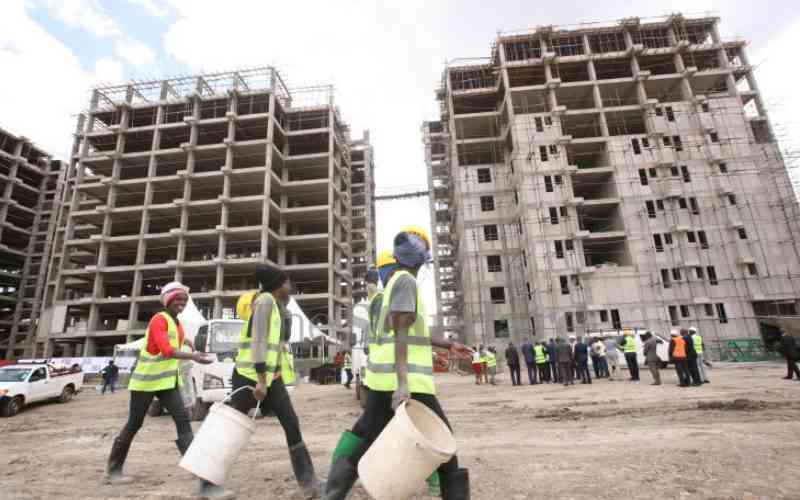 When President Uhuru Kenyatta included the provision of affordable housing as a key pillar in his Big Four agenda, little did he know that the subject would generate more heat than light two years down the line.
When President Uhuru Kenyatta included the provision of affordable housing as a key pillar in his Big Four agenda, little did he know that the subject would generate more heat than light two years down the line.
Some have argued that it is impossible to practically deliver the promised 500,000 houses by 2022 as this will require construction of 370 houses daily.
While there are usual murmurs associated with such State proposals, it was the government’s notice last week to start deducting 1.5 per cent of employees’ salaries to fund the project that caused a major public uproar. Employers are supposed to remit a similar percentage to the kitty.
For the second time, the court stopped the implementation of the housing levy ostensibly to allow for consolidation of cases filed about the issue.
For the last one week, though, Kenyans have been treated to a high octane discussion pitting players in the private sector on one hand and the government on the other. One of the key opponents of the whole levy structure is Prof Alfred Omenya, an architect and CEO of Eco-Build Africa.
Through his social media handles and interviews, Prof Omenya has brought out a number of legal, social and ethical issues that Kenyans have grappled with in recent days. On the other hand, Charles Hinga, the principal secretary in charge of housing, has come out guns blazing in support of the programme.
We hereby outline a number of the sticking points brought out by Prof Omenya as well as how the principal secretary addressed them.
First, Prof Omenya had an issue with the statistics used as the basis for the housing proposal. “Who exactly are the homeless? Who are the 4.8 million (in KPMG study) whose housing is inadequate,” he asked.
He also asked where the housing deficit is and whether home ownership through debt was the best way out.
The principal secretary’s response was immediate. He invited the architect to visit the home registration portal, bomayangu.go.ke and see proof of those in acute need of housing.
“Visit our portal and tell those Kenyans, 210,000 so far in only two months and waking up at 4am to register, that they are less Kenyans than you. No one said Kenyans are homeless, but ask your house help or gardener if where they live qualifies to be called a home,” said Hinga.
Next, Omenya pointed out that the private sector is already building houses without government funds. Rather than opt for a compulsory levy, Omenya said the government ought to design a subsidy scheme and affordable mortgages. This, he said, could include land, tax holidays and bank guarantees.
The PS, however, said that regardless of the subsidies, the private sector would still build for the three per cent of the population they have been building for in the past “because they don’t think Wanjiku is bankable”.
Hinga said the current system has squeezed developers on the profits side, adding that under the new affordable housing scheme, they would not make “the usual obscene profits riding on the backs of our people”.
Prof Omenya also had an issue with funding the scheme through a levy on all workers that would yield about Sh57 billion annually. He accused the government of not doing enough feasibility studies, wondering whether the Kenyan model was based on global best practices.
Stay informed. Subscribe to our newsletter
In response, Hinga cited the case of Mexico with a housing scheme dating back to 1972. Infonavit is Mexico’s backbone of mortgage financing in the 32 states. Seven out of 10 home loans are granted by the scheme. According to the scheme’s website, over two million loans have been issued to 7.5 million Mexicans.
This is one of the models Hinga hopes to replicate in Kenya.
While the government says the 1.5 per cent deduction from one’s salary is refundable, Prof Omenya wanted to know what happens to the equal remittance from the employer. He opined that it is a form of tax introduced under the guise of the housing levy.
The PS stated that this part of the contribution is not refundable as it would be used to lower the interest rate to a single digit.
Prof Omenya also wondered why the whole process is not solidly anchored in the current Constitution, adding that the government is even using a 1953 piece of legislation as well as a 1967 Act to operationalise the process.
However, Hinga said these laws, though not perfect, provide a starting point for the process, adding that waiting to have a perfect Act in an era where bills can get stuck in Parliament for years could lead to “a still birth”.
To the naysayers who argue that even if the 500,000 houses were delivered, 75 per cent of contributors would not get a house, Hinga said the programme would go beyond 2022.
With such strong opinions from members of the public and the private sector, the government has an uphill task convincing doubters that its intentions are noble and that the State is not out to hoodwink Kenyans.
[email protected]
 The Standard Group Plc is a
multi-media organization with investments in media platforms spanning newspaper
print operations, television, radio broadcasting, digital and online services. The
Standard Group is recognized as a leading multi-media house in Kenya with a key
influence in matters of national and international interest.
The Standard Group Plc is a
multi-media organization with investments in media platforms spanning newspaper
print operations, television, radio broadcasting, digital and online services. The
Standard Group is recognized as a leading multi-media house in Kenya with a key
influence in matters of national and international interest.
 The Standard Group Plc is a
multi-media organization with investments in media platforms spanning newspaper
print operations, television, radio broadcasting, digital and online services. The
Standard Group is recognized as a leading multi-media house in Kenya with a key
influence in matters of national and international interest.
The Standard Group Plc is a
multi-media organization with investments in media platforms spanning newspaper
print operations, television, radio broadcasting, digital and online services. The
Standard Group is recognized as a leading multi-media house in Kenya with a key
influence in matters of national and international interest.

 When President Uhuru Kenyatta included the provision of affordable housing as a key pillar in his Big Four agenda, little did he know that the subject would generate more heat than light two years down the line.
When President Uhuru Kenyatta included the provision of affordable housing as a key pillar in his Big Four agenda, little did he know that the subject would generate more heat than light two years down the line.







